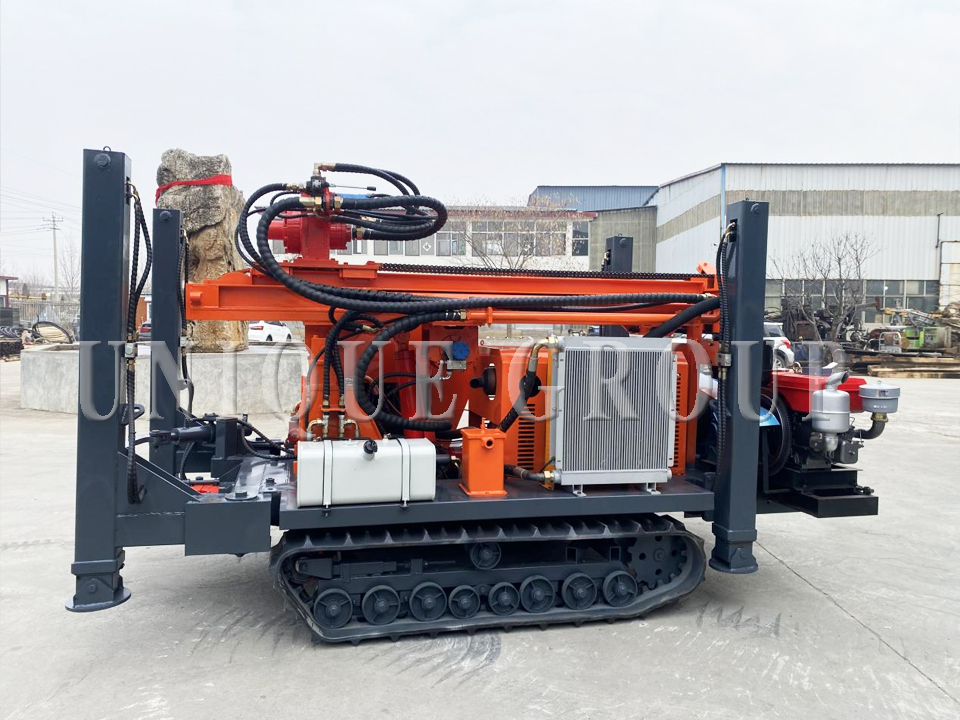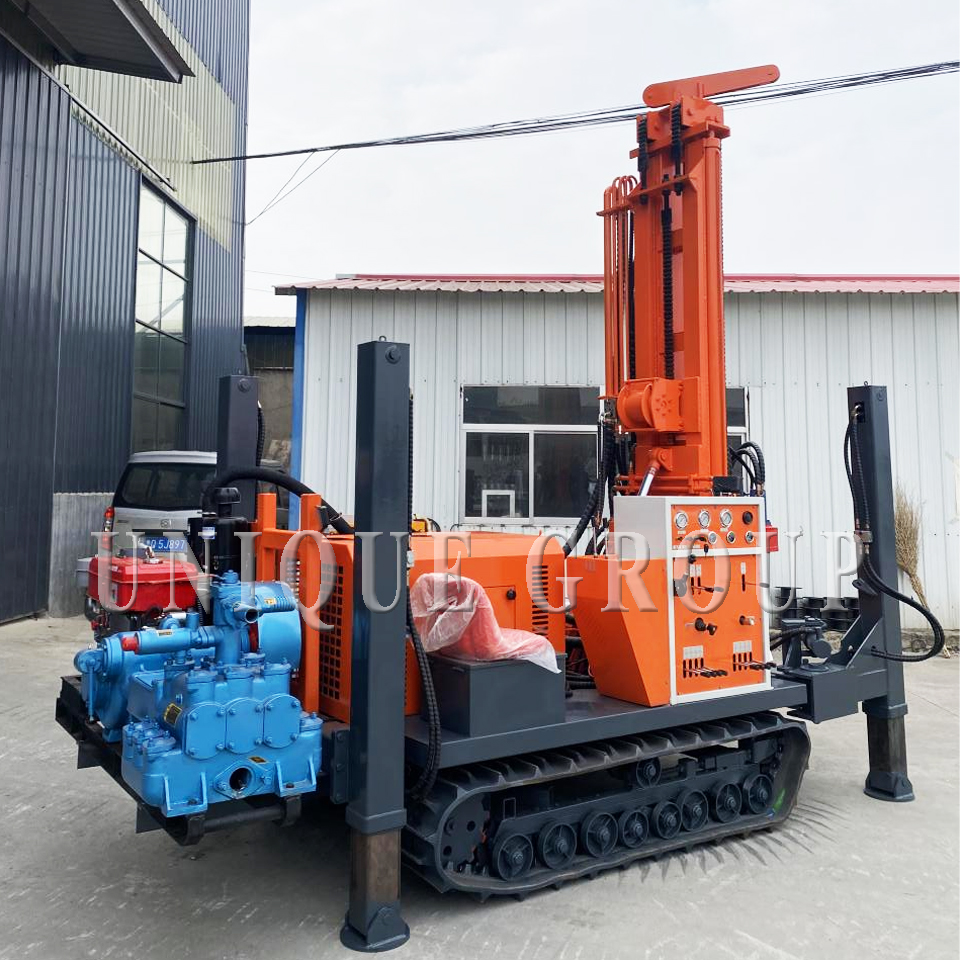How to choose the right water well drilling rig?

When selecting a suitable water well drilling rig, simple configuration, low energy consumption, easy operation, high maneuverability, high versatility and small size are usually required. In actual operation, the appropriate drilling rig type needs to be selected based on factors such as formation conditions, borehole size, drilling depth, and drilling methods.
1. Drilling efficiency: Drilling efficiency is affected by many factors such as formation conditions, operator skills/experience, drilling rig type and drilling methods. When rock conditions are applicable, it is recommended to use an underground drilling rig with an air compressor; for soil, clay and sand conditions, the best option is to use a drilling rig with a mud pump; while in conditions such as cobblestone, a reverse circulation system is the most suitable drilling method .
2. Price: The price of the machine is a key factor in choosing a suitable drilling rig, and it is also a one-time investment. As the borehole diameter and depth increase, so does the machine price. Comparing different drilling rig types, the price of down-the-hole drilling rigs is higher than that of core drilling rigs, and the price of hydraulic drilling rigs is higher than that of vertical shaft drilling rigs. In addition, the price of truck-mounted drilling rigs is higher than that of crawler drilling rigs.
3. Operating costs: Operating costs have an important impact on the profits of the drilling business, including personnel wages, casing, mud, fuel costs, and drilling rig maintenance costs. Looking at different drill types, the operating costs of down-the-hole (DTH) drills are generally higher than those of rotary drills used with mud pumps because DTH drills consume a lot of fuel. In comparison, vertical drilling rigs (mechanically driven) have relatively low operating costs.
4. Drilling method: According to the working principle of the drilling rig, there are three common drilling methods. Down-the-hole drilling methods require use with an air compressor and are suitable for rock conditions; mud pump rotary drilling is an economical method suitable for soil, sand, clay layers and rocks, but is slower; auger drilling does not require Air compressor or mud pump, but only for soil, clay and sand. There are two methods for drilling technology: direct circulation drilling and reverse circulation drilling. The latter is suitable for pebble, sand and soil geological structures.
5. Spare parts availability: When purchasing a drilling rig, the availability of spare parts is crucial as it forms part of the operating costs. If spare parts are difficult to obtain, it will result in additional costs and downtime, impacting the profitability of the drilling operation. Therefore, spare parts availability needs to be carefully considered.
These are the basics about selecting a drill rig and can serve as a guide when purchasing one. For more information on drill rig types, please feel free to contact us.


